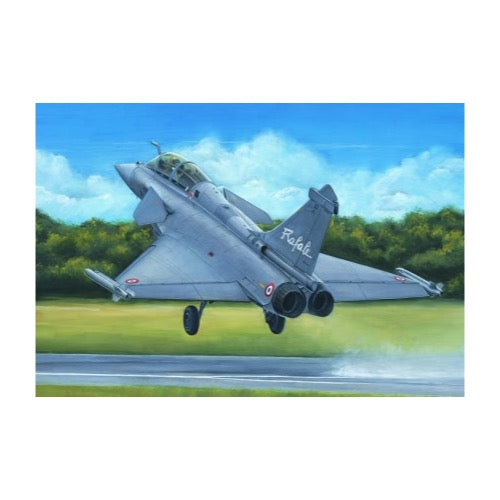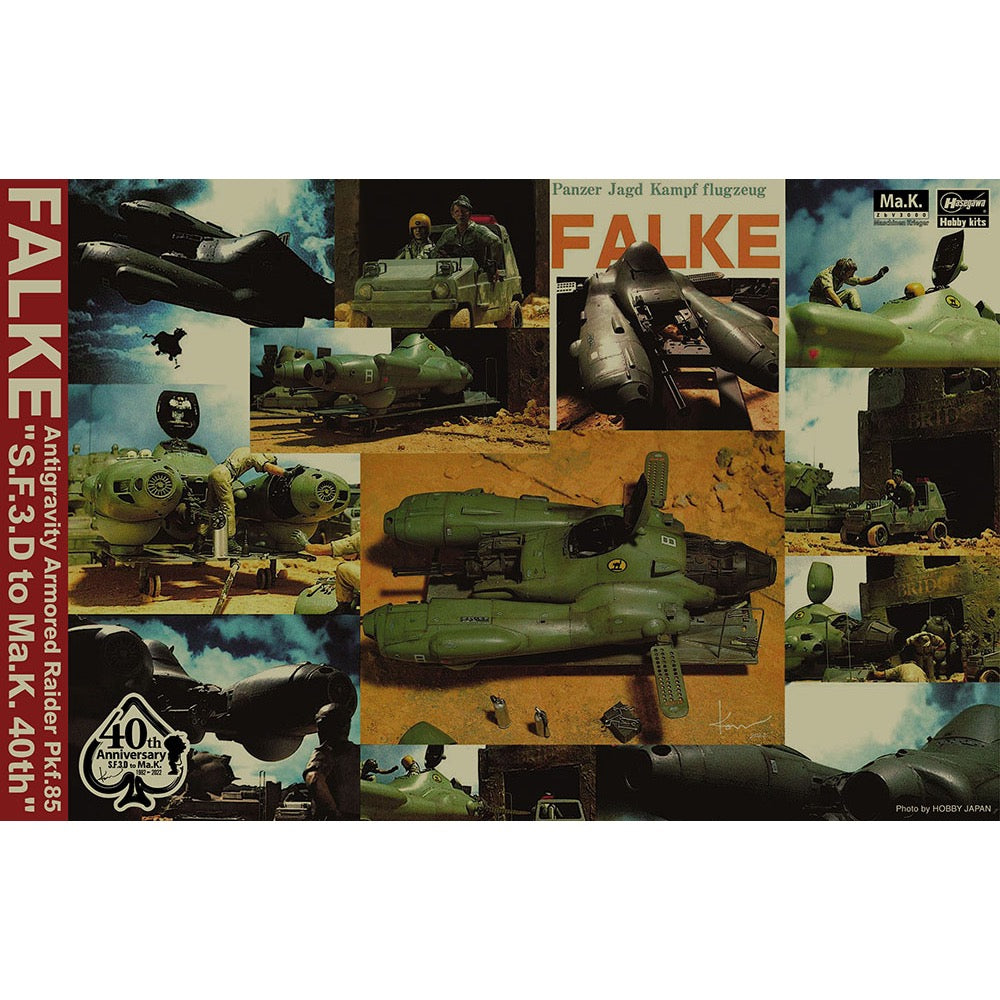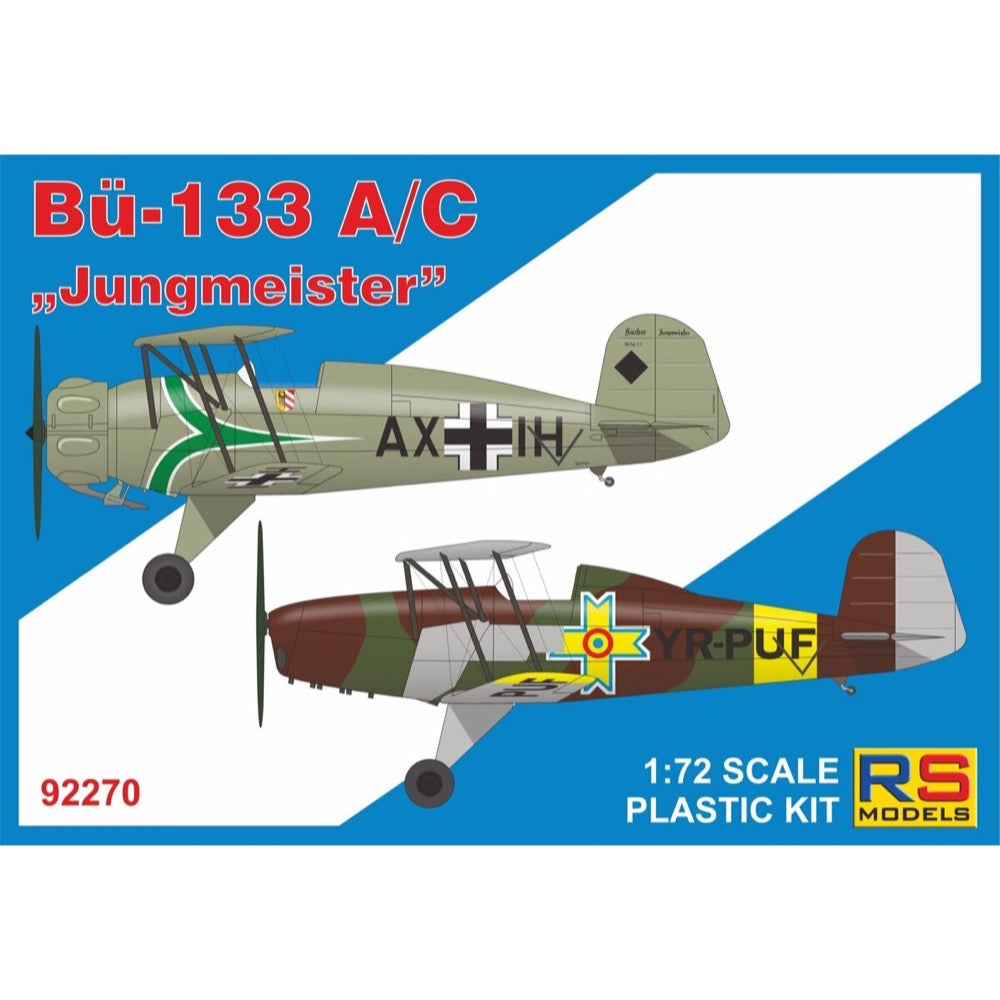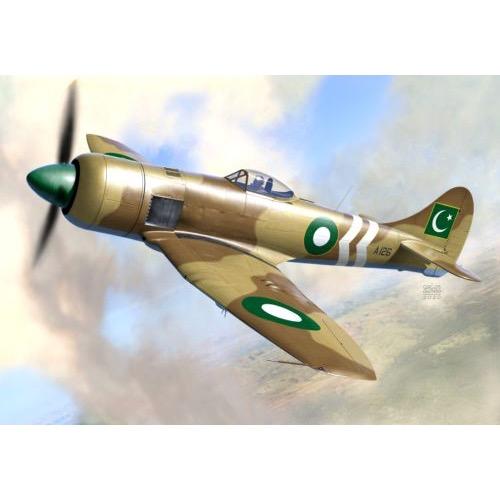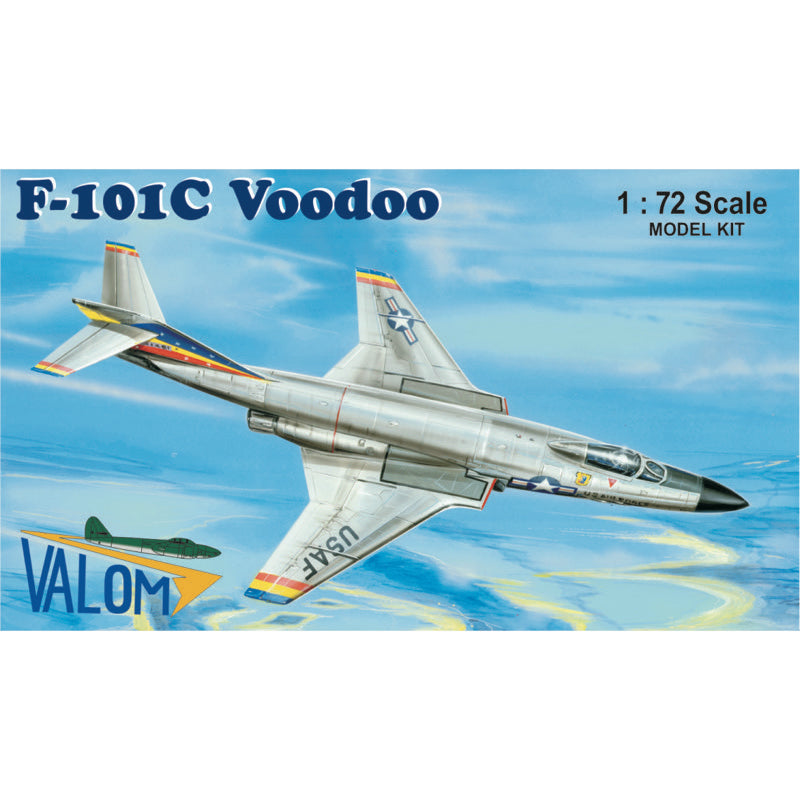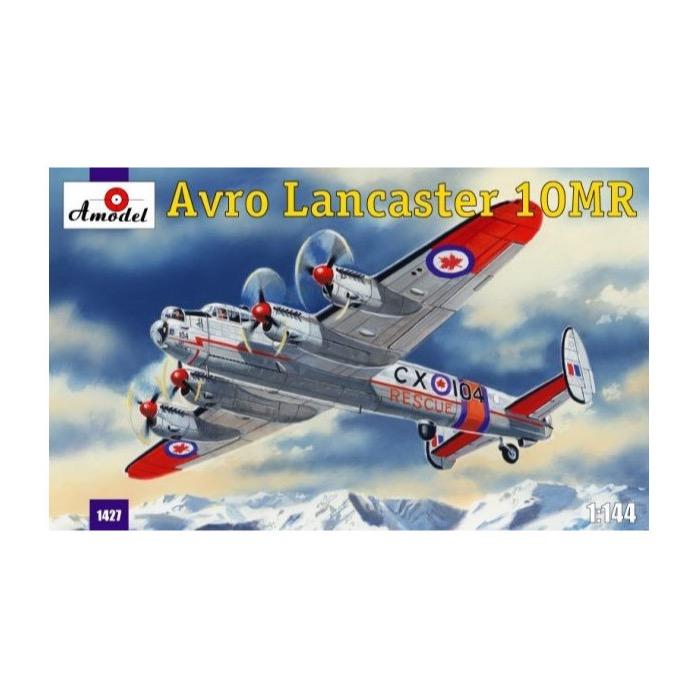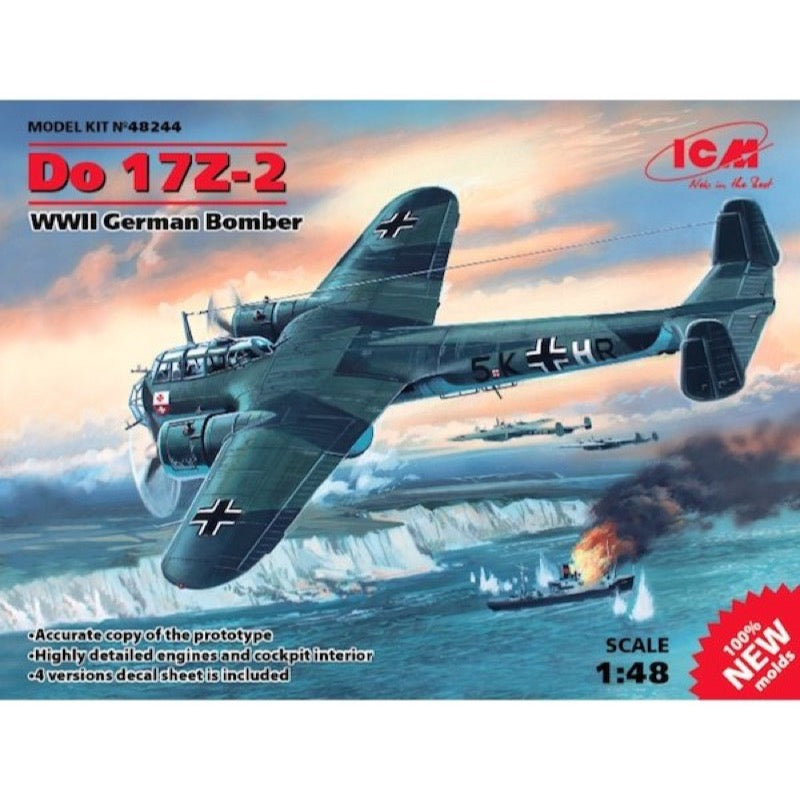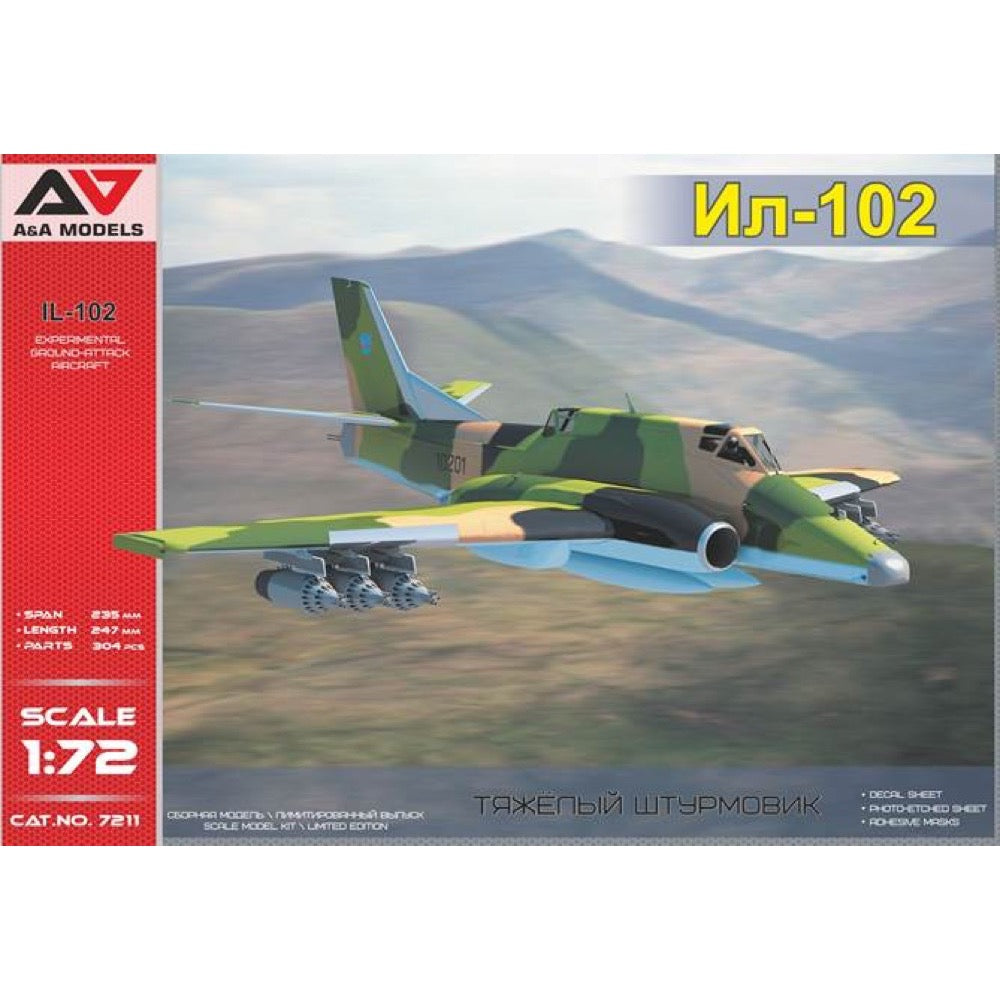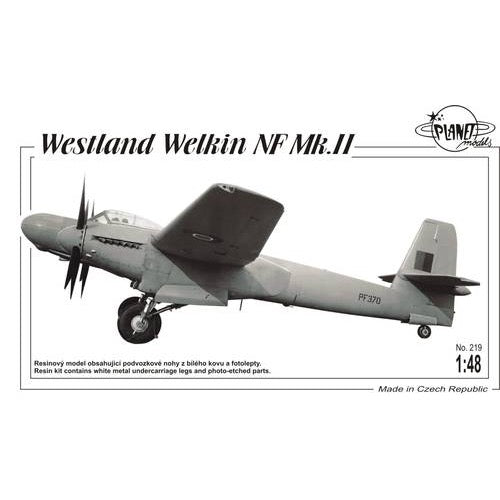
Planet Models 219 1/48 Westland Welkin NF Mk.II
81.00
$
<p>The Westland Welkin was a British heavy fighter aircraft in a spine-wing configuration with a retractable landing gear from the Second World War. The drive was provided by two Rolls-Royce Merlin 76/77 engines with 1233 HP each. The prototype flight took place in 1942. In the course of serial production, about 80 examples of this aircraft were produced. It was armed with 4 20mm Hispano-Suiza cannons.</p>
<p>The Westland Welkin was created as a highly specialized fighter to operate at very high altitudes (over 13,000 meters), capable of engaging German reconnaissance and long-range bombers (eg Ju-86P) that could raid over the British Isles. Work on this atypical plane began in 1940, and Westland relied on the Whirlwind plane. The planes entered the line in the summer of 1944, but in November of the same year they were withdrawn from the line as the threat from the Luftwaffe bombers had dropped to zero. The only mass-produced version was the Westland Welkin Mk. I. A prototype of a night fighter (Westland Welkin NF Mk. II) was also created, but it never entered mass production.</p>
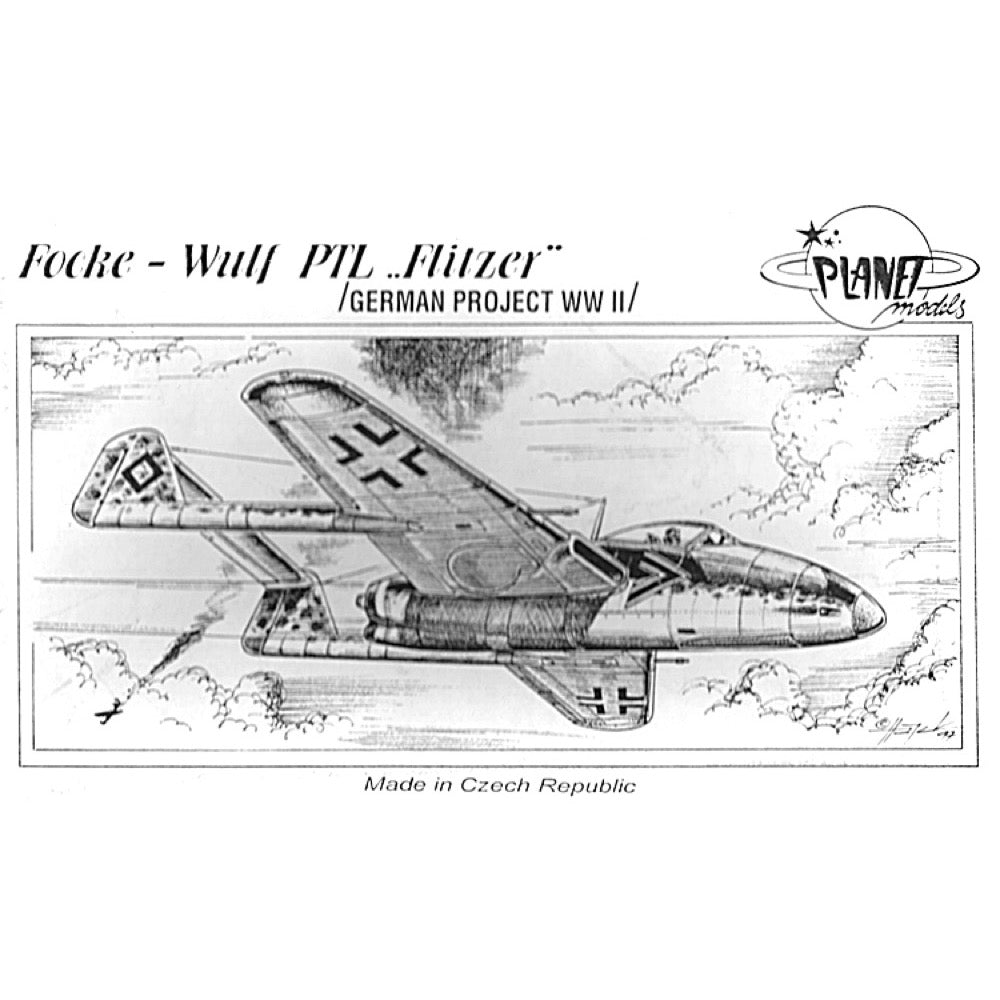
Planet Models 025 1/48 Focke-Wulf PLT Flitzer
40.00
$
<p>The Focke-Wulf Flitzer was a project for a German WWII fighter. The propulsion was to be provided by either the Heinkel HeS-011 turbojet engine or the Walter HWK 109-509 rocket engine. The plane was to reach speeds of up to 955 km / h. The deck armament was to consist of two 30mm Mk103 cannons or two 20mm MG151 cannons.</p>
<p>In March 1943, work began at the Focke-Wulf plant to develop a completely new jet-powered fighter. In February 1944, the first models of the new machine appeared. It was characterized by an unusual design with a relatively short fuselage, an engine located inside it, wings with a large lifting surface and a double-bar tail. Overall, the Focke-Wulf Flitzer design was very similar to the later British de Havilland Vampire. However, the machine did not go into production because it was not approved by the German Ministry of Aviation, which preferred to focus its efforts on putting into production the Me-262, compared to which the Focke-Wulf Flitzer did not perform better.</p>
<h3>Specification</h3>
<ul>
<li>Product: Full resin kit</li>
<li>Type: Aircraft</li>
<li>Edition: Planet Models</li>
<li>Scale: 1/48</li>
<li>Origin: german</li>
<li>Era: Word War II</li>
<li>Weight: 0.2381 kg</li>
</ul>
<h3>Contents<br>
</h3>
<ul>
<li>Resin (cast), Vacuformed, Decalsheet (waterslide)</li>
</ul>
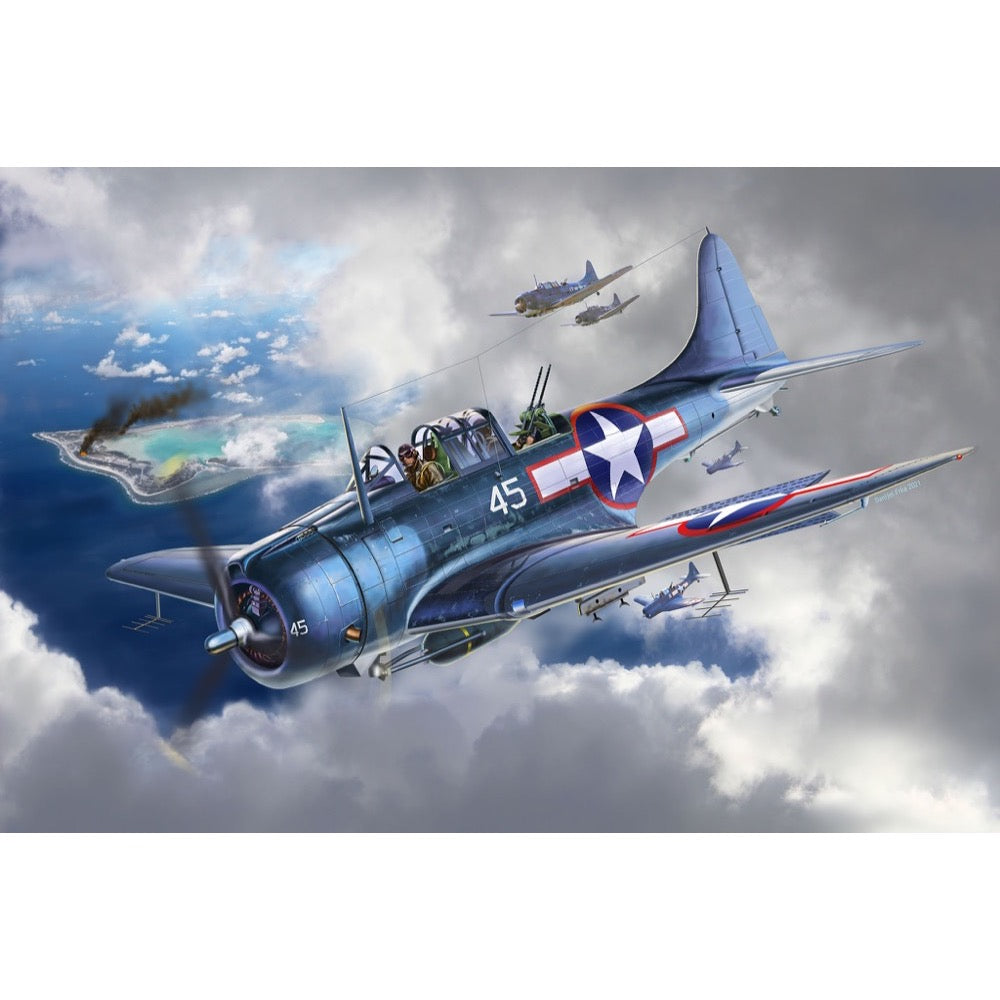
Revell 03869 1/48 SBD-5 Dauntless Navyfighter
33.00
$
<p>The SBD Dauntless was the US Navy's most famous carrier-based dive bomber during World War II. It was nicknamed "Slow But Deadly" because of the aircraft's low top speed of only a little over 400 mph and its simultaneous great success.<br></p>
<h3>Features</h3>
<ul>
<li>Detailed weapons bay</li>
<li>Finely reproduced cockpit</li>
<li>External armament</li>
<li>Former Accurate Miniatures kit</li>
<li>Plastic model kit (not assembled)</li>
<li>Illustrated, multilingual building instructions</li>
<li>Decals</li>
</ul>
<h3>Specifications<br>
</h3>
<ul>
<li>Scale: 1:48</li>
<li>Age: 12+</li>
<li>Number of parts: 125</li>
<li>Length: 205mm</li>
<li>Wingspan: 275mm</li>
</ul>
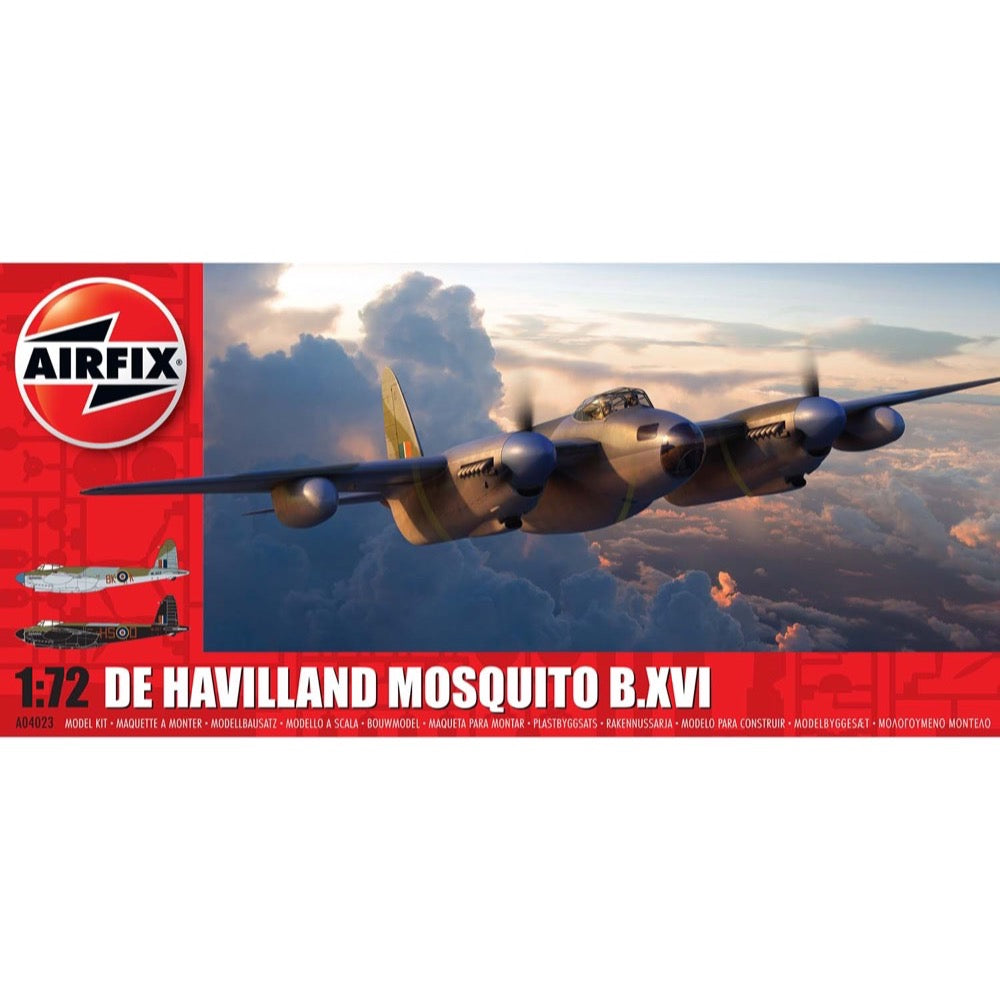
Airfix A04023 1/72 de Havilland Mosquito
19.00
$
<h3>de Havilland Mosquito B.XVI</h3>
<p>Also known as 'The Wooden Wonder', this multi-role aircraft was constructed using 'non-strategic' materials and employed a clever system of balsa and birch plywood lamination, which gave the aircraft great strength. </p>
<ul>
<li>1:72 Scale</li>
<li>Highly Detailed Model</li>
</ul>
<p>Without question, the de Havilland Mosquito qualifies as one of the finest fighting aeroplanes of the Second World War and one which could claim to be the envy of every other air force, particularly the Luftwaffe, who tried, but never quite managed to produce an equivalent aircraft. A true multi-role aircraft, the Mosquito's famous nickname 'The Wooden Wonder' referenced the fact that this hugely successful British aircraft was constructed using 'non-strategic' materials and employed a clever system of balsa and birch plywood lamination, which gave the aircraft great strength. Although they relied on the performance and survivability of their Mosquitos, men in these units would often take its nickname a stage further and affectionately refer to their aircraft as 'Flying Furniture'.</p>
<p>Developed and tested largely as a private venture and without interference from the Air Ministry, once they saw what de Havilland had managed to produce, the Ministry were suitably impressed and immediately placed an order for 150 aircraft, with the Mosquito quickly attracting a 'priority status' production requirement. The Mosquito was one of the fastest aircraft in the world at that time and one which would prove to be something of an aviation phenomenon - although initially intended as a high speed bomber, Mosquitos would also operate as day and night fighters, pathfinders, night intruders, maritime strike and reconnaissance aircraft.</p>
<p>Once the first production aircraft started reaching RAF squadrons towards the end of 1941, the de Havilland Mosquito quickly showed itself to be one of the most valuable assets available to the Royal Air Force, a real war winner and one which would serve with distinction for the remainder of the conflict. Originally conceived as a high speed bomber for the RAF, the final major bomber variant of the de Havilland Mosquito was the B.XVI, with deliveries to front line squadrons starting from 1944. This was a development of the earlier B.IX variant and one which had been optimised for high altitude operation, incorporating a new pressurised cabin. Another unarmed version of the Mosquito, the B.XVI could carry a 3,000lb bomb load, however, all but the first 12 aircraft from a total production run of 402 machines incorporated modifications to allow a 4,000lb 'Cookie' or blockbuster bomb to be carried internally, a weapon which possessed devastating destructive capability.</p>
<p>Combining the power of these fearsome weapons with the legendary speed and bombing accuracy associated with Mosquito operations allowed Bomber Command to keep the pressure on the enemy throughout the latter stages of WWII. Interestingly, these huge bombs were exactly four times the weight of the original bomb load this exceptional aircraft was designed to carry, which is testament to the strength of the Mosquito's construction techniques. Optimised for high altitude operations, this final major bomber variant of the Mosquito could be powered by several different 'seventy series' versions of the Rolls Royce Merlin engine, in addition to incorporating a modified wing, which could now accept either a 50 or 100 gallon paper drop-tank on either side and up to four externally mounted 500lb bombs, further enhancing the strategic capabilities of this superb aircraft.</p>
<p>By the end of its ten year production run, which began in 1940, almost 8,000 of these highly effective warplanes had been constructed. For an aircraft which earned such an impressive wartime reputation, it is sobering to think that the Mosquito may have been stopped in its tracks, as Air Ministry officials were initially concerned that work on this new aircraft project might disrupt production of the Tiger Moth training biplane, something they could not allow to happen. Thankfully, designers at de Havilland knew they were on to a winner and were determined to see their magnificent new aircraft fly.</p>
<h4>Includes</h4>
<ul>
<li>Sprues</li>
<li>Decals</li>
</ul>


